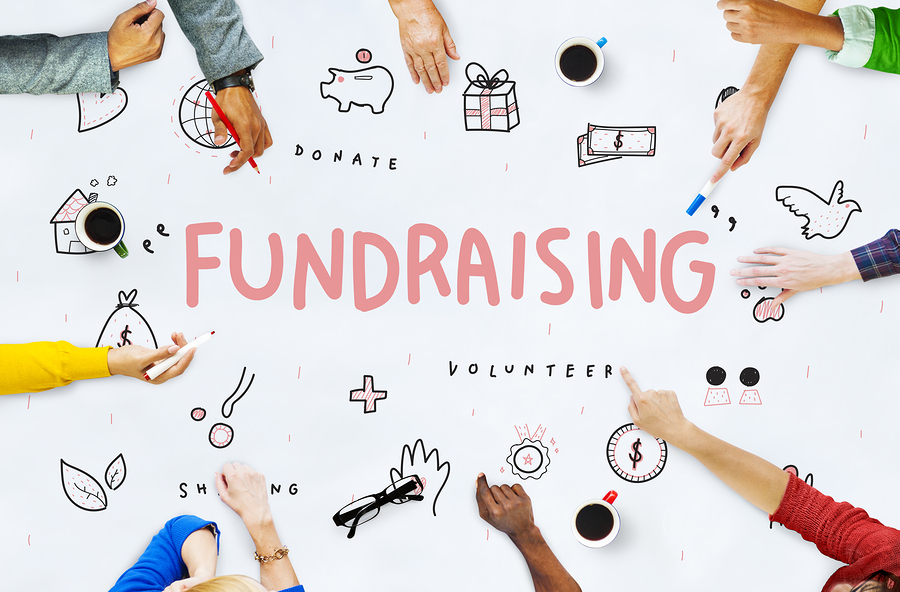Nonprofit Marketing: Strategies to Enhance Understanding and Drive Donations
Nonprofit Marketing: Strategies to Enhance Understanding and Drive Donations
Blog Article
The Duty of Community Interaction in Nonprofit Fundraising: Building Lasting Relationships for Sustainable Support
Area engagement is significantly recognized as an essential part of successful not-for-profit fundraising. The strategies and approaches employed to engage neighborhoods differ extensively, elevating important concerns regarding performance and influence.
Understanding Neighborhood Involvement
Area engagement is a crucial part of effective nonprofit fundraising initiatives. It describes the strategies and activities that organizations use to get in touch with their neighborhood neighborhoods, promoting relationships that are mutually beneficial. Recognizing community involvement involves acknowledging its diverse nature, which consists of outreach, participation, and partnership. Nonprofits must identify vital stakeholders-- such as area members, local organizations, and various other companies-- to produce effective involvement methods.
Reliable community interaction is predicated on active listening and responsiveness to the requirements and passions of the area. This procedure involves obtaining comments, recognizing neighborhood dynamics, and ensuring that the organization's mission straightens with local top priorities. Engaging the neighborhood can take different kinds, including public conferences, volunteer opportunities, and partnership campaigns, each made to urge involvement and investment in the company's objectives.
Moreover, area engagement should be approached as an ongoing discussion as opposed to an one-time effort. By fostering an inclusive environment where area voices are listened to and valued, nonprofits can construct a strong structure for future fundraising undertakings. Inevitably, a deep understanding of neighborhood involvement encourages organizations to produce authentic connections that improve their general effectiveness and sustainability.
Benefits of Solid Relationships
Solid connections formed with area interaction return various advantages for nonprofit fundraising initiatives. First and primary, these connections foster count on and reliability, essential components in encouraging donors to add. When possible fans see a not-for-profit actively included in their community, they are more probable to believe in its mission and impact.

In addition, these relationships facilitate effective communication. Nonprofits can leverage their links to share tales of impact, updates, and requires, ensuring that fans remain informed and engaged. This open line of communication not only reinforces bonds however likewise motivates referral promo, broadening the nonprofit's reach.
Lastly, solid community ties can draw in new partners and sponsors. Individuals and organizations are a lot more likely to align with companies that show purposeful area participation, giving additional sources and assistance that can significantly improve fundraising capacities. Therefore, cultivating durable connections via community interaction is indispensable to a not-for-profit's lasting fundraising success.
Techniques for Effective Engagement
Exactly how can nonprofits efficiently involve their communities to boost fundraising initiatives? Routine updates, involving web content, and calls-to-action can galvanize community interest and involvement.
Second, organizing click to find out more community occasions, such as workshops, volunteer opportunities, or fundraising drives, promotes face-to-face communication, allowing nonprofits to showcase their influence and efforts. These occasions not only raise funds yet also cultivate partnerships and enable area participants to involve directly with the reason.
Third, applying tailored interaction strategies can enhance involvement. Tailoring messages to details donor sectors based upon interests and past contributions fosters a sense of belonging and financial investment in the organization's objective.
Finally, creating collaborations with local companies and neighborhood leaders can intensify outreach efforts. Collective efforts can improve exposure and reputation, demonstrating a cumulative commitment to the community's wellness. By incorporating these techniques, nonprofits can develop long-term connections that enhance fundraising initiatives and drive lasting assistance.
Gauging Engagement Success
While engaging the community is important for effective nonprofit fundraising, measuring the performance of these involvement efforts is similarly crucial. Establishing clear metrics permits companies to examine just how well they are connecting with their audience and accomplishing their fundraising goals. Secret performance indicators (KPIs) such as donor retention prices, volunteer participation degrees, and interaction on social media sites systems provide concrete data for evaluation.

Consistently evaluating these metrics makes it possible for companies to pivot their approaches when necessary, ensuring that neighborhood interaction continues to be straightened with their general objective. Moreover, sharing these results with stakeholders promotes transparency and develops trust fund, motivating additional community participation. Ultimately, a robust measurement structure not just notifies future fundraising initiatives yet likewise reinforces the connection between the not-for-profit and its advocates, preparing for sustainable success.
Study in Area Effect
Various study illustrate the profound effect that community interaction can carry not-for-profit fundraising success. One notable example is the "Something to chew on" effort, where a regional food financial institution partnered with institutions and organizations to host neighborhood suppers. These occasions not only raised funds yet additionally promoted a feeling of belonging amongst look at this website individuals, dramatically increasing donor retention prices.
Another compelling instance is the "Environment-friendly Spaces Task," which involved regional homeowners in the revitalization of urban parks. This campaign not just amassed financial backing from regional organizations but additionally cultivated a volunteer base that added to recurring upkeep and programs. The feeling of possession and pride among neighborhood participants converted into sustained payments.
In the world of arts, the "Art for All" campaign effectively engaged neighborhood musicians and clients to develop collaborative art installments, resulting in raised presence and donations for a neighborhood arts not-for-profit.
These examples highlight that when nonprofits focus on neighborhood participation, they can create long lasting partnerships that enhance fundraising initiatives, guaranteeing sustainable support and promoting a vivid area additional hints culture. Such situations demonstrate that community engagement is not merely an approach but a vital pillar of nonprofit success.
Verdict
In verdict, neighborhood engagement is indispensable to the success of not-for-profit fundraising efforts. Eventually, a robust structure of community assistance not only intensifies fundraising possible however likewise cultivates a society of partnership, necessary for accomplishing long-lasting organizational objectives and maintaining significant impact. fundraising consultant.
Nonprofits should identify essential stakeholders-- such as area members, neighborhood businesses, and other companies-- to develop reliable involvement methods.

In conclusion, area interaction is important to the success of not-for-profit fundraising efforts.
Report this page